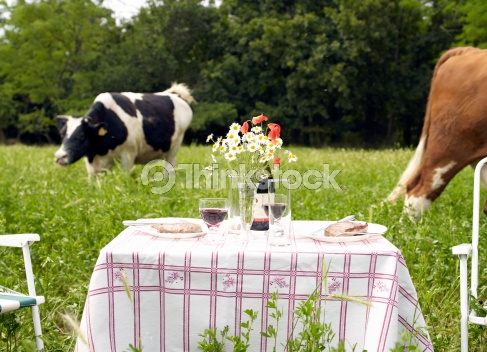Eat Real Food
Last post I talked a bit about why I don’t think “dieting” works (miss that post? check it out here). I try to keep my “diet” simple and it’s not really a diet at all, it’s just a simple way of eating every day (and I enjoy it!). What is this magic way of eating? When I’m hungry I eat real food until I’m almost full and I try to eat mindfully and slowly rather than scarfing down my food while I’m distracted. That’s it. No set time schedule for eating. No weighing or measuring my foods or worrying about my macronutrient ratios. Not to say those are bad things, they absolutely work for some people! But they didn’t work for me. For me, when I felt like I had to eat a certain number of meals a day and certain amounts and at specific time I became a bit obsessive about it.
When can I eat again? What can I eat at that time? Will I be somewhere I can eat or should I rearrange my schedule so I don’t screw up my meal timing for the day? I’d outright panic sometimes if I didn’t have a snack handy for my feeding time. Even though I was eating “healthy”, I was ruining all that good health by piling on a load of stress about healthy eating! I was legitimately stressed out about it. Not healthy.
Now I just eat when I’m hungry. This is typically a little coffee and a little coconut butter when I first wake up and then three square meals a day. Sometimes I have a little snack, depending on how hungry or active I’ve been. Sometimes I have big meals, sometimes small. There are no rules other than it being real food. So what is real food to me?
My Small Farm Test
How do I determine if it’s real food? For me, I just ask one question, does it pass my small farm test? I envision myself on a gorgeous, sustainable, small farm with rolling agricultural fields, orchards, grazing animals, and outbuildings to store and prepare foods and I ask myself one question – does this food I’m about to eat fit into that picture? If I can grow or raise it, harvest or collect it, prepare it, and store it on my idyllic small farm, I can eat it. For me this includes plants and trees such as vegetables, tubers (primarily sweet potatoes, parsnips, and yams), fruits, seeds, nuts, sea vegetables (the farm is by the ocean!), some legumes (peas, occasional soaked beans), and grains (occasional quinoa or rice). It also includes animals and all their parts and products such as beef, bison, lamb, seafood, pork, poultry, offal, eggs, and raw dairy.
And remember, this includes things that can be prepared on a small farm with what is harvested or collected, too. Things like coconut and olive oils, butter and ghee, coffee, and tea. I also make nut butters, veggie chips (I love kale chips!), french fries (sweet potato fries are delicious – especially when cooked in coconut oil) and so on. And yes, things like sausages, bacon, beef jerky, and cheeses made from grass-fed or pastured animals count, too. They’re just not staples of my diet. I hope to learn how to make cheese from my friend Jane and recently read a book on butchering and preparing meats. I haven’t done it yet but hope to but because I could do it on my farm, those things all pass my small farm test :)
Red wine counts for me, too, – it’s a fermented grape, right?!? (I hope to try and make wine some day, too!) Again, it’s not a staple of my diet but a couple nights a week, I love to sip on some delicious red wine. And I’ll have a bit of dark chocolate or some homemade ice cream on occasion, too. Just not every day (and not even every week).
Along the way I’ve also learned how to ferment my own veggies (sauerkraut and pickles so far, I’m still experimenting with other veggies!) and dairy (kefir and yogurt), how to make coconut milk and raw milk ice creams, and how to preserve foods through dehydration and freezing (I’m still working on the canning – but I did buy a pressure canner!). I save a fortune by making my own yogurt, sun-dried tomatoes (not really sundried, I do them in the dehydrator!), pickles, sauerkraut, and kale chips and getting fruits and veggies in bulk when they’re in season and dehydrating or freezing the extras (and eventually canning!). Once I figure out the easiest, most time efficient ways of doing these things, I’ll put them up on the site so you can try them out, too! I know not everyone has a desire to be a homesteader so I’ll also provide you with some great store brands that are minimally processed and could pass my small farm test, too!
Shopping
I also eat locally and seasonally by shopping at the Vista Farmer’s Market for produce, nuts, honey, fish, cheeses, oils, coffee, and eggs, belonging to J.R. Organics Family Farm CSA for local fruits, veggies, and flowers, and Son-Rise Ranch CSA for grass-fed beef and pastured pork and poultry. (**Side note- other great resources for anyone in the San Diego area are Naturally to Your Door – they deliver local organic fruits and veggies to your house! – and Primal Pastures. If you don’t live in the San Diego area and want to learn more about CSA’s in your corner of the US, check out LocalHarvest.org for more information on CSAs, Local Farms, or for their LocalHarvest Store. For my Non-US friends, let me know if you need resources and I’ll track them down!)
Dining Out
I stick to my small farm test when I’m eating out; opting for local meats and produce whenever possible and asking my homestead test when reading the menu. I also ask a lot of questions about preparation because gluten can ruin a great meal for me ( I was afraid to eat out for a while because I’d feel so awful afterwards, now I’ve learned the right questions to ask. It doesn’t always help, unfortunately I still get exposed to gluten with subsequent tummy issues but most restaurants are very good nowadays!).
One Size Doesn’t Fit All
And remember – not all foods that can be grown and prepared on small farm are good for everyone. I don’t tolerate gluten (in a severe bloating, doubled over in pain, hours on the toilet sort of way) so I avoid it completely. I also don’t eat other gluten-free grains much (other than ears of corn) because my tummy doesn’t do well with them. Same for legumes (although I love peas and handle them pretty well!). But that’s me.
For those that can tolerate grains and legumes with not ill-effects (typically bloating, constipation, diarrhea, IBS, joint pain, brain fog, acne, etc) – non-GMO grains and legumes that are properly prepared can be a part of a healthy way of eating. Some people may be able to tolerate grains but not eggs or dairy or nightshades (tomatoes, eggplants, potatoes) or fruit. We’re all different and we all need to figure out what works best for us.
But the baseline is my small farm test. Can I grow it, pick it, prepare it **if I had the time and was so inclined, that is ;o) ** If the answer is yes, then go ahead and eat it. Pay attention to how you feel after eating. Feel good? Keep eating it whatever you had. Feel funky? Try not eating what may have made you feel a little off for a while and see how you do.
I know it may sound impossible to eat this way, but it’s achievable in small steps!
Remember, you don’t need to make a gazillion changes overnight.
I was hesitant to even put all of this in this post at the risk of sounding like I’m telling people how to eat in a very specific way or making them feel like they have to change everything that they’re doing right now, that’s not the intent. But I wanted to put it up because people are always asking me what I eat and I wanted to provide a sort of template for the path to better eating all of us can take.
It’s been a long journey for me to get to a place where I eat pretty healthy most of the time. It wasn’t over night. And I’m by no means perfect. I’m just thankful that I found what works for me, that I don’t get stomach aches any more, that I don’t get headaches anymore, that my joints don’t hurt as much anymore. That has had a major positive impact on my life! And so I believe there are some things everyone can benefit from with this type of approach, even if they’re just small things.
And it doesn’t have to feel like work or a diet! For example, I don’t eat any foods that I hate because I think they’re good for me. I only eat foods I like and most foods I eat are ones that I love. If you know me, you know that I LOVE food and LOVE to cook. So just know that eating healthy doesn’t mean eating miserably! I also love to share what I’ve learned along the way and hopefully some of what I’ve learned you’ll be able to make work for you along your own journey.
“A journey of 1000 miles begins beneath one’s feet” – Laozi
I can’t stress enough, it took me YEARS to get here! It didn’t happen overnight. I got here by making a small change and sticking with it and then making another small change. And I’m still making small changes and still learning new things that I will continue to pass on.
I hope the information I share helps you. Don’t feel overwhelmed if you are trying to make changes in how you and your family eat, it’s all about small changes over time. And all of the things that work for me may not work for you, that’s to be expected and is absolutely ok! I hope to help you find out what does work for you, though. I found out what works for me through trial and error – hell, I learned I can’t tolerate gluten after my hip surgery! (I went on an anti-inflammatory diet, including no gluten, and all my GI problems – mentioned above so I won’t repeat them – resolved!). That made me want to learn more about nutrition and led me to the Precision Nutrition Certification. I’ll be sharing lots of good information I’ve learned from them with you in future posts, too. I’m hoping that some of my trial and error means you won’t have to go through as many tr
ials and errors as I have! If I can shorten up the process for you a bit, I’ll be stoked!
As always, if you have any questions please email me or hit me up on facebook. If you want specific small changes, I can send you a list of ideas or send you one each week in your mailbox, just let me know!
Thanks for reading my post!


